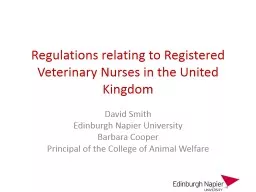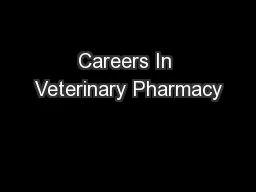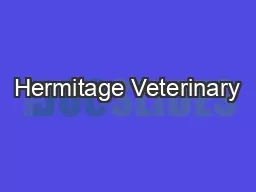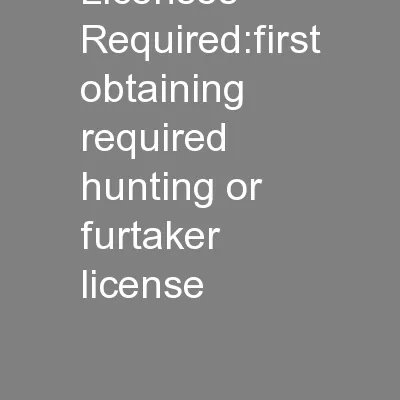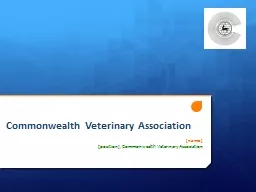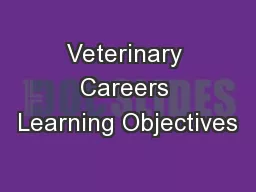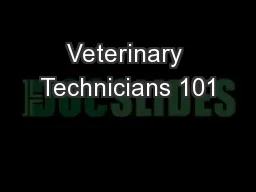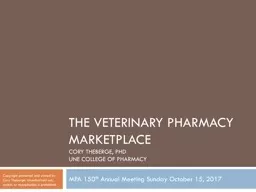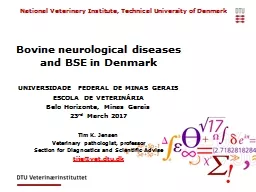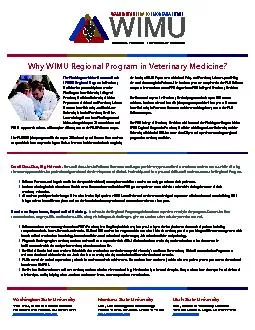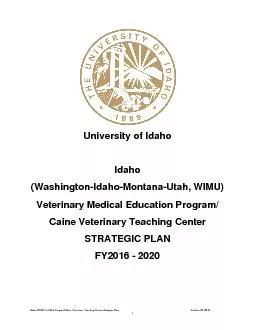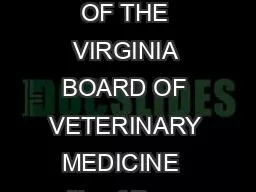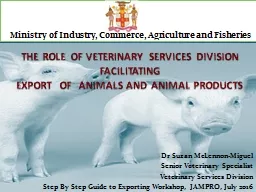PPT-R egulations relating to Registered Veterinary
Author : trish-goza | Published Date : 2018-02-27
N urses in the United Kingdom David Smith Edinburgh Napier University Barbara Cooper Principal of the College of Animal Welfare The Royal College of Veterinary
Presentation Embed Code
Download Presentation
Download Presentation The PPT/PDF document "R egulations relating to Registered Vete..." is the property of its rightful owner. Permission is granted to download and print the materials on this website for personal, non-commercial use only, and to display it on your personal computer provided you do not modify the materials and that you retain all copyright notices contained in the materials. By downloading content from our website, you accept the terms of this agreement.
R egulations relating to Registered Veterinary: Transcript
N urses in the United Kingdom David Smith Edinburgh Napier University Barbara Cooper Principal of the College of Animal Welfare The Royal College of Veterinary Surgeons RCVS The Royal College of Veterinary Surgeons exercises functions under the Veterinary Surgeons Act 1966 but was brought into being by a Royal Charter of . The Institute of Technical Arts is an independent, private postsecondary school specializing in applied animal education and training at the diploma and associate of science degree levels that has been in business since 1988. Building your skill set/finding your job. Gigi Davidson, . BSPh. , DICVP. Director of Clinical Pharmacy Services. NC State College of Veterinary Medicine. What is veterinary pharmacy?. Clinical pharmacy practice. Hospital. March 16, 2014. Topic: Reasons . to visits your . Veterinarian with Dr. . Chandan. . Maan. . Welcome to . Introduction to Dr . Chandan. . Maan. . Vaccinations - Cats. Kitten . FRCP- 6-8 weeks (boosters 3-4 weeks). EGULATIONS EGULATIONS permit (most sporting arms are not authorized), bow and arrow, orlights when intentionally used to locate wildlife. A person huntingfield or private property without the landowne [name]. [position], . Commonwealth Veterinary Association. Presentation outline. CVA background, mission. CVA work priorities. Partnerships for delivery. Some key achievements. Going forward. Commonwealth Veterinary Association. Define terms relating to veterinary care. Specify the role of selected veterinary workers, including personal qualities, levels of education, and credentialing requirements. Describe the function of the veterinary team. In cooperation with: . The Emma Barnsley Foundation. The PEER Program at. Texas A&M College of Veterinary Medicine & Biomedical Sciences. http://peer.tamu.edu/. A Career Worth Barking About. Cory Theberge, . phd. . une. college of Pharmacy. MPA 150. th. Annual Meeting Sunday October 15, 2017. Copyright protected and owned by Cory Theberge. Unauthorized use, access, or reproduction is prohibited. . Bovine. . neurological. . diseases. and BSE in Denmark. UNIVERSIDADE FEDERAL DE MINAS GERAIS. ESCOLA DE VETERINÁRIA. Belo Horizonte, Minas . Gerais. 23. rd. March . 2017. Tim K. Jensen. Veterinary . The Washington-Idaho-Montana-Utah (WIMU) Regional Program in Veterinary Medicine is a partnership between the Washington State University College of Veterinary Medicine, University of Idaho Depa Idaho - October 20, 2015 1 University of Idaho Idaho (Washington - Idaho - Montana - Utah , W IM U) Veterinary Medical Education Program/ Caine Veterinary Teaching Center STRATEGIC PLAN FY 20 16 - 18 VAC 150-20-10 et seq Regulations Governing the Practice of Veterinary Medicine PART I General Provisions 8 VAC 150-20-10 Definitions The following words and terms when used in this chapter sh DIVISION. FACILITATING. EXPORT . OF ANIMALS . AND ANIMAL . PRODUCTS. Dr Suzan . McLennon. -Miguel. Senior Veterinary . Specialist. Veterinary Services Division. Step By Step Guide to Exporting Workshop, JAMPRO, July 2016. CC By 045 Tagesu A (2018) Examination of feces. Int J Vet Sci Res s1: 045-050. DOI: http://dx.doi.org/10.17352/ijvsr.s1.106Life Sciences Group : Manual guidance of veterinary clinical practice and l
Download Document
Here is the link to download the presentation.
"R egulations relating to Registered Veterinary"The content belongs to its owner. You may download and print it for personal use, without modification, and keep all copyright notices. By downloading, you agree to these terms.
Related Documents

